On July 13, 2022, a new year began for the community at the St. Francis of Assisi Novitiate in Arroyo Grande, California, USA. This inter-Provincial novitiate is under the jurisdiction of the Conventual Franciscan Federation (CFF).
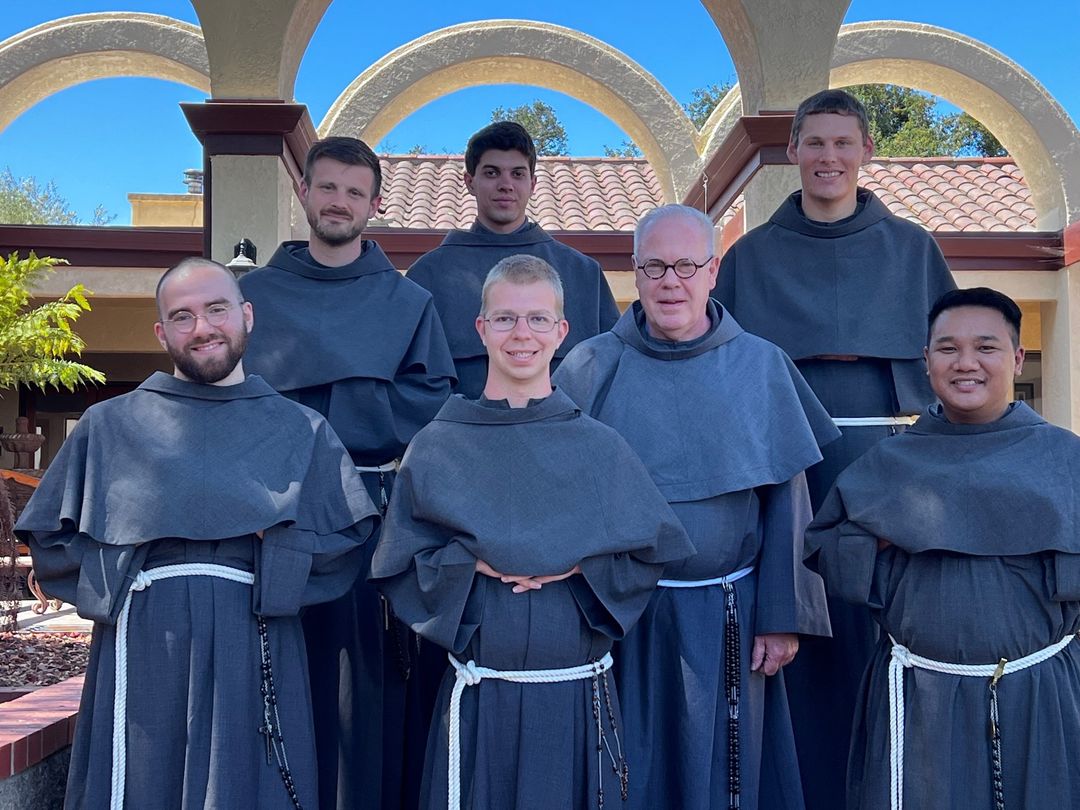

Category Archives: Uncategorized Novitiate Class of 2022-2023On July 13, 2022, a new year began for the community at the St. Francis of Assisi Novitiate in Arroyo Grande, California, USA. This inter-Provincial novitiate is under the jurisdiction of the Conventual Franciscan Federation (CFF). 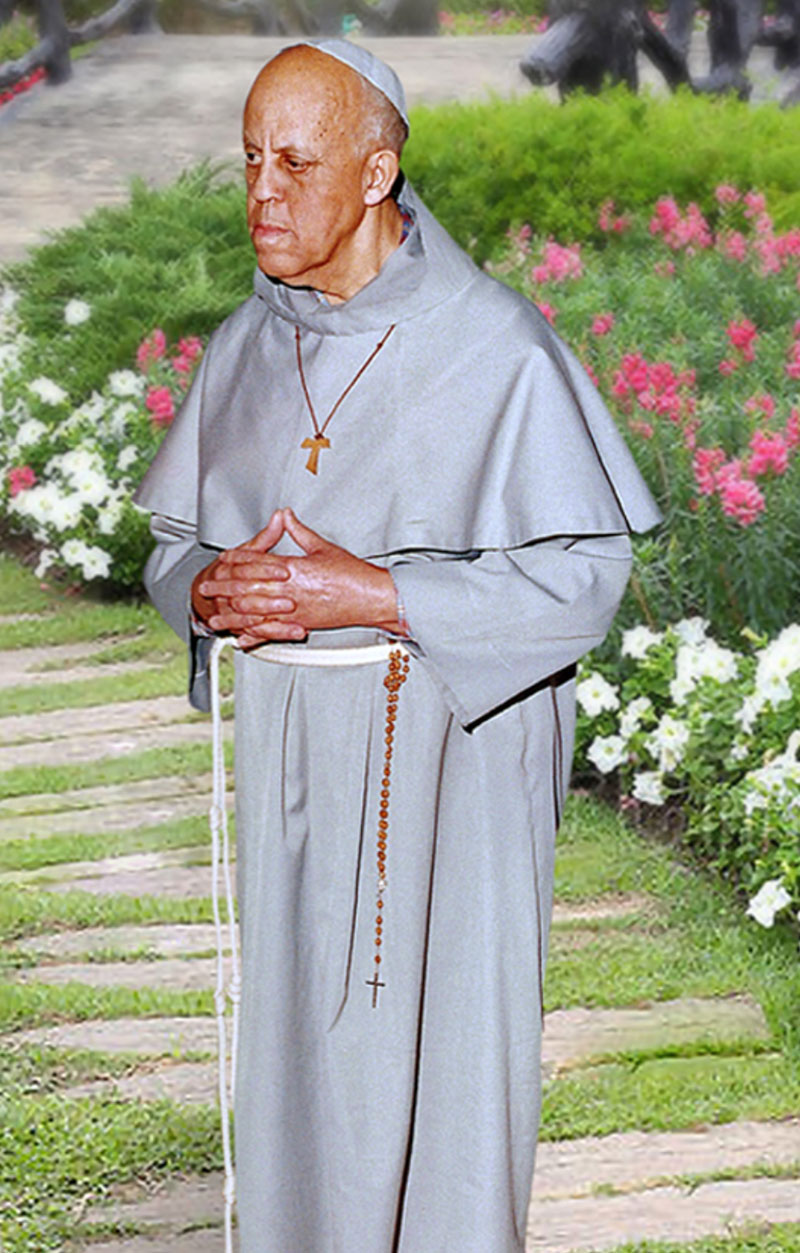 +Fr. Martin de Porres Maria Ward, OFM Conv. in the NewsJuly 27, 2022 Black Catholic Messenger – article by Nate Tinner-Williams – eaturing the cause of +Fr. Martin de Porres Maria Ward, OFM Conv. for sainthood.
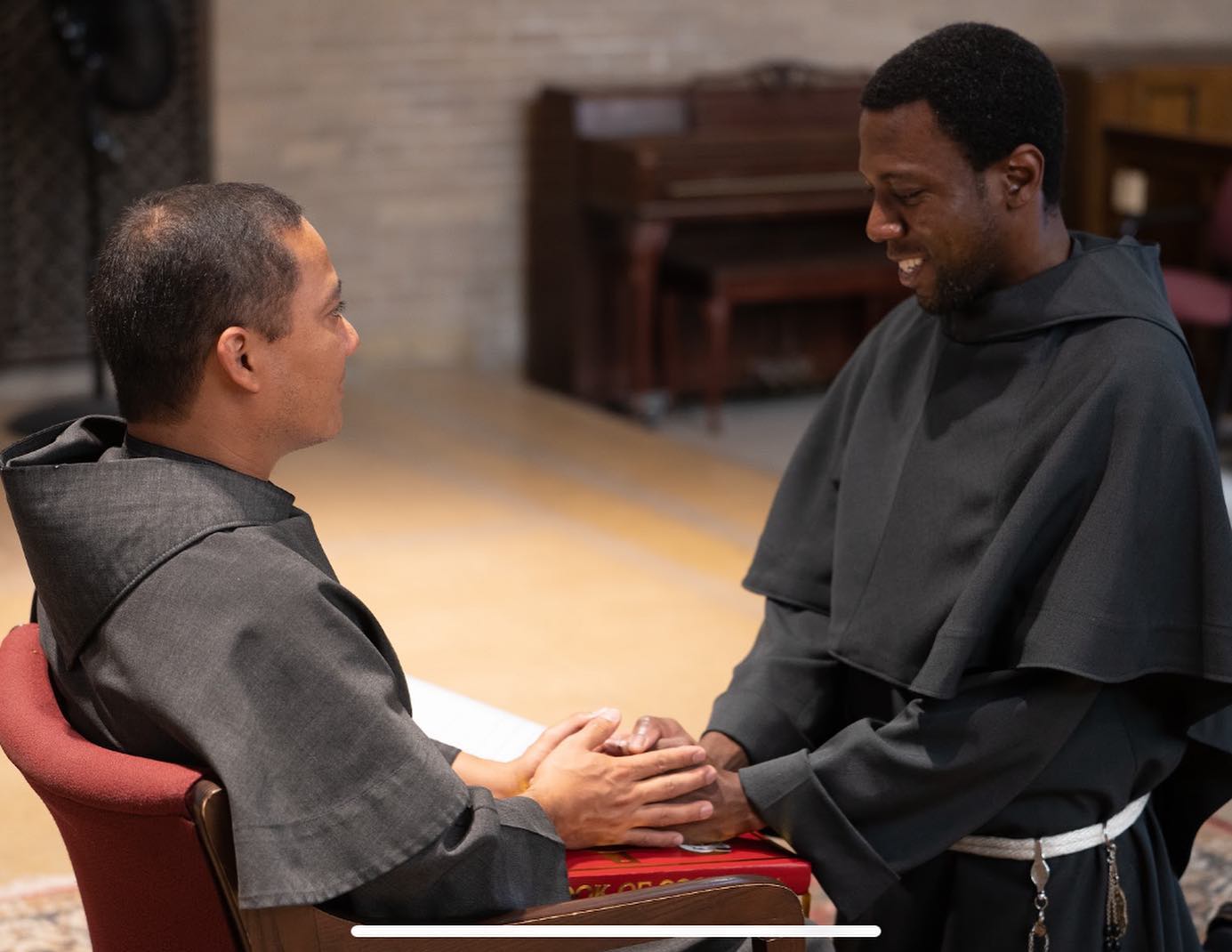 Apostolic Year of FormationAdapted from the 07/27/2022 St. Francis High School Facebook post: Our Lady of the Angels Province student friar Antonio Moualeu, OFM Conv. will be joining our friars of the St. Frances of Assisi Friary (Hamburg, NY) for his Apostolic Year of Formation. We have nine friars living in that friary, seven of whom serve at our St. Francis High School (SFHS), where friar Antonio is assigned as the new Campus Minister for the 2022-2023 school year. On June 25, 2022, the former Campus Minister, Fr. Matt Foley, OFM Conv., was appointed President of the school. This past May, friar Antonio Moualeu, OFM Conv. received a Doctoral Degree in Mechanical Engineering, from Georgia Institute of Technology. (Read More)
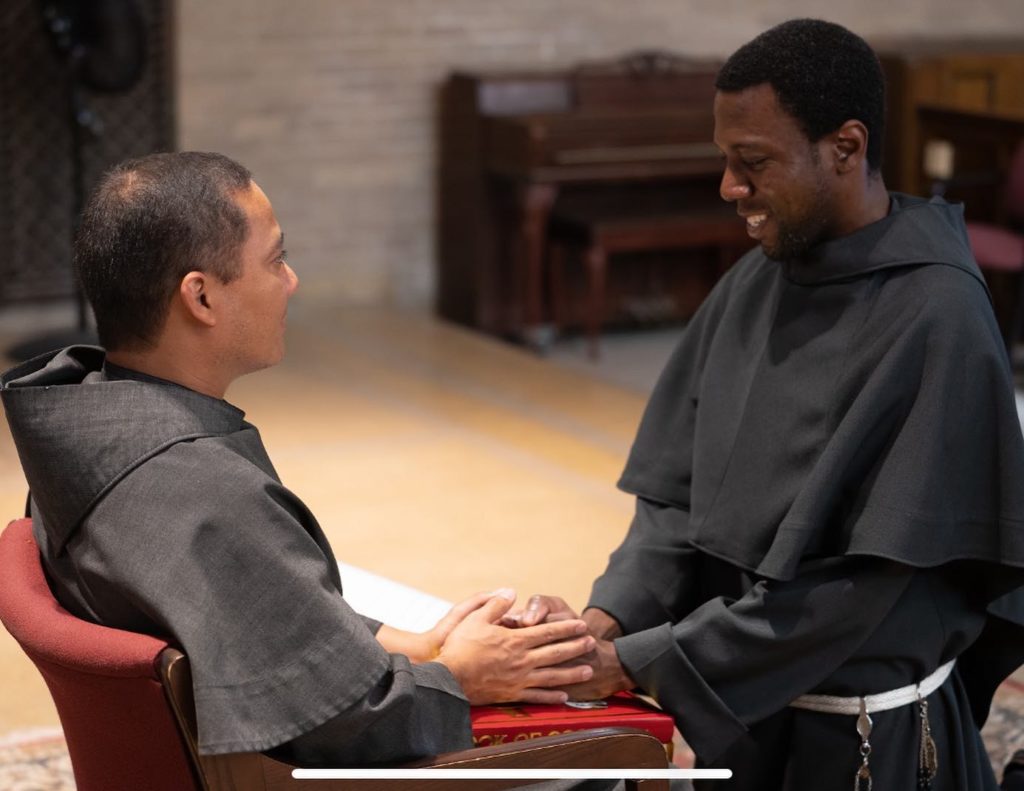 On July 20, 2022, in the beautiful SFHS Chapel, at the hands of Fr. Maximilian Avila, OFM Conv. (seated at left), friar Antonio renewed his Simple Vows; recommitting his desire to live the Gospel as a Franciscan Friar Conventual. Friar Max has been assigned as the new Friary Guardian, and has served as an Instructor at SFHS since 2018. Alongside two of his confreres, friar Antonio first professed his Simple Vows of poverty, chastity and obedience, on July 22, 2019. These Simple Vows are also referred to as Temporary Vows, since they are for only three years. It usually takes a bit longer for the final preparation for Solemn (also known as Perpetual) Vows, so it is most often necessary for a friar to renew his Simple Vows, at least once during his formation journey. Such a Vow Renewal has not taken place in the school’s chapel for a long time, and it was a very joyous occasion. When asked about this next step, friar Antonio said, “I’m very excited to serve the SFHS community as the next Campus Minster. I look forward to a great school year ahead!” On July 20, 2022, in the beautiful SFHS Chapel, at the hands of Fr. Maximilian Avila, OFM Conv. (seated at left), friar Antonio renewed his Simple Vows; recommitting his desire to live the Gospel as a Franciscan Friar Conventual. Friar Max has been assigned as the new Friary Guardian, and has served as an Instructor at SFHS since 2018. Alongside two of his confreres, friar Antonio first professed his Simple Vows of poverty, chastity and obedience, on July 22, 2019. These Simple Vows are also referred to as Temporary Vows, since they are for only three years. It usually takes a bit longer for the final preparation for Solemn (also known as Perpetual) Vows, so it is most often necessary for a friar to renew his Simple Vows, at least once during his formation journey. Such a Vow Renewal has not taken place in the school’s chapel for a long time, and it was a very joyous occasion. When asked about this next step, friar Antonio said, “I’m very excited to serve the SFHS community as the next Campus Minster. I look forward to a great school year ahead!”Learn more about life as a Franciscan Friar Conventual: Franciscan Voice
For more information on Our Lady of the Angels Province Vocations, email vocations@olaprovince.org. 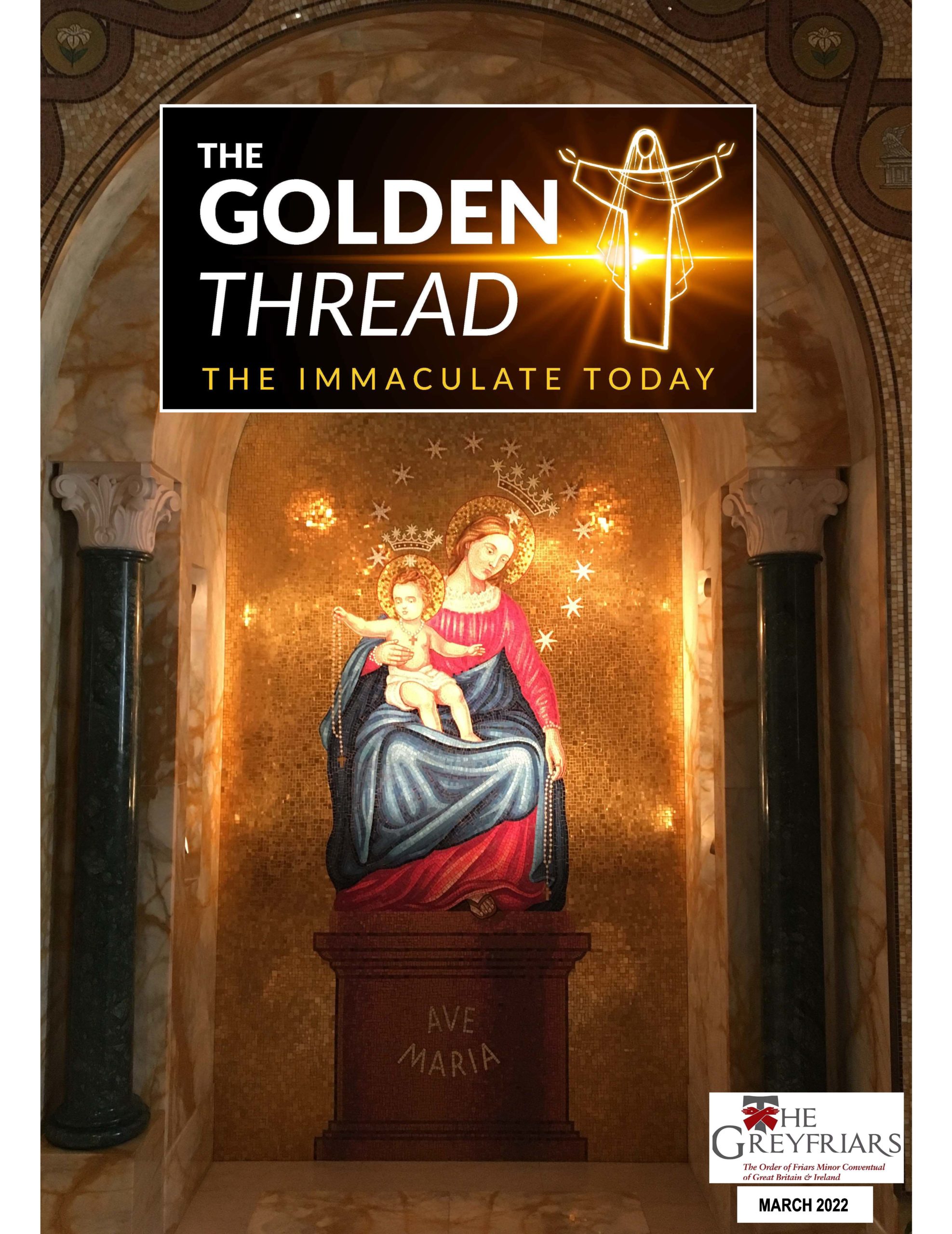  Bicycle Pilgrimage with Friar Bogusław
July 16-17, 2022: I participated in the Bicycle Pilgrimage from New Jersey to American Czestochowa, which is located about 20 mils from Philadelphia, Pennsylvania (Doylestown, PA). I was there for the first time, and I also had a sentimental reason, because my grandmother’s cousin, the president of the American Episcopate and Cardinal of Philadelphia – the late +Most Rev. John Cardinal Krol contributed significantly to the construction of the Sanctuary of Our Lady of Czestochowa in this place.
For the eighth time, Pawel Siek organized a bicycle pilgrimage. It ran under God’s care, that is, there were no accidents and other bad adventures, with the small exception of when it rained abundantly at night and several tents were flooded and several participants “floated on mattresses.” However, this experience had a penitential dimension and did not change the joyful atmosphere. 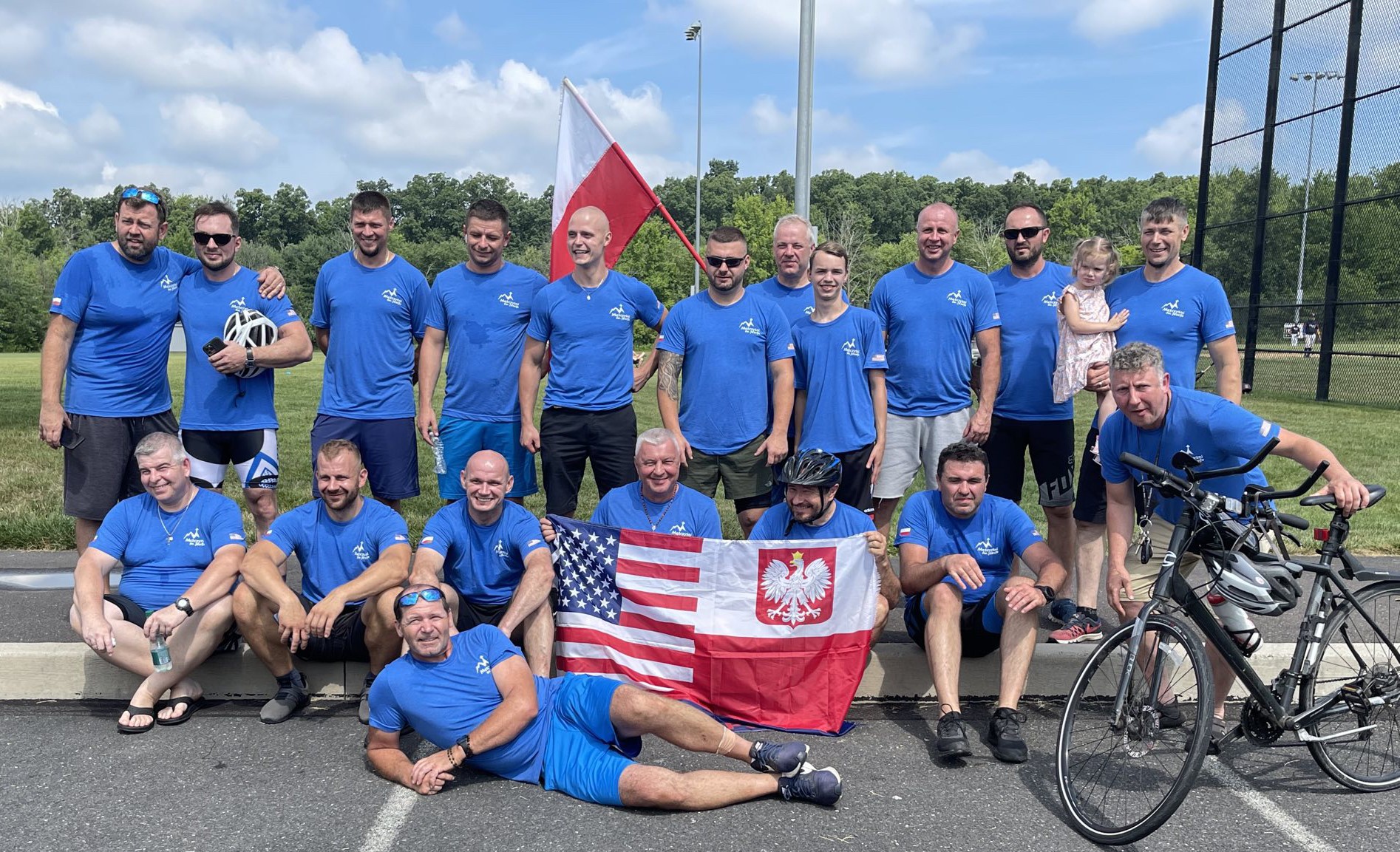 Friar Bogus (in helmet), with his group of participants. Our pilgrimage was attended by 20 men from the group of St. Joseph. The oldest participant in our group was 62 years old, and the youngest 18 years old. We traveled about 180 kilometers in two days. After each stage, which was an average of 20 mils, we prayed the rosary, and at 3 pm the Chaplet of Divine Mercy. At the end of the prayers, I spoke about mini-spiritual conferences, supplementing them with short examples from my missionary experiences in Uganda. Finally, several participants asked for the sacrament of Penance.
Meet Fr. Bogusław Dąbrowski, OFM Conv.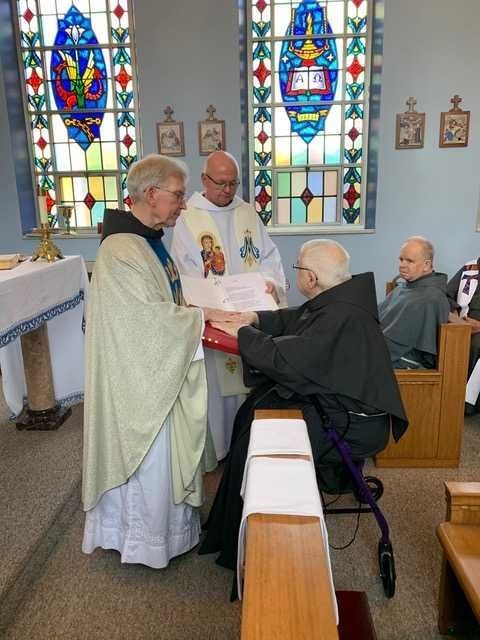 Congratulations, Br. Vincent!
Note: Friar Vincent 1st Professed Solemn Vows in 1970 and served in many capacities during his time as a friar of our province, including serving as a Missionary Friar. After a short period of time away, and having been approved for re-admission to the Order by the Minister General and his General Definitory, Br. Vincent was re-invested in the habit of our Order as a member of Our Lady of the Angels Province, on September 3, 2018, by then Minister Provincial, Friar James, during Mass in the Provincialate chapel. At that time, he began the canonically required period of probation, professing his Simple Vows in July 2019. 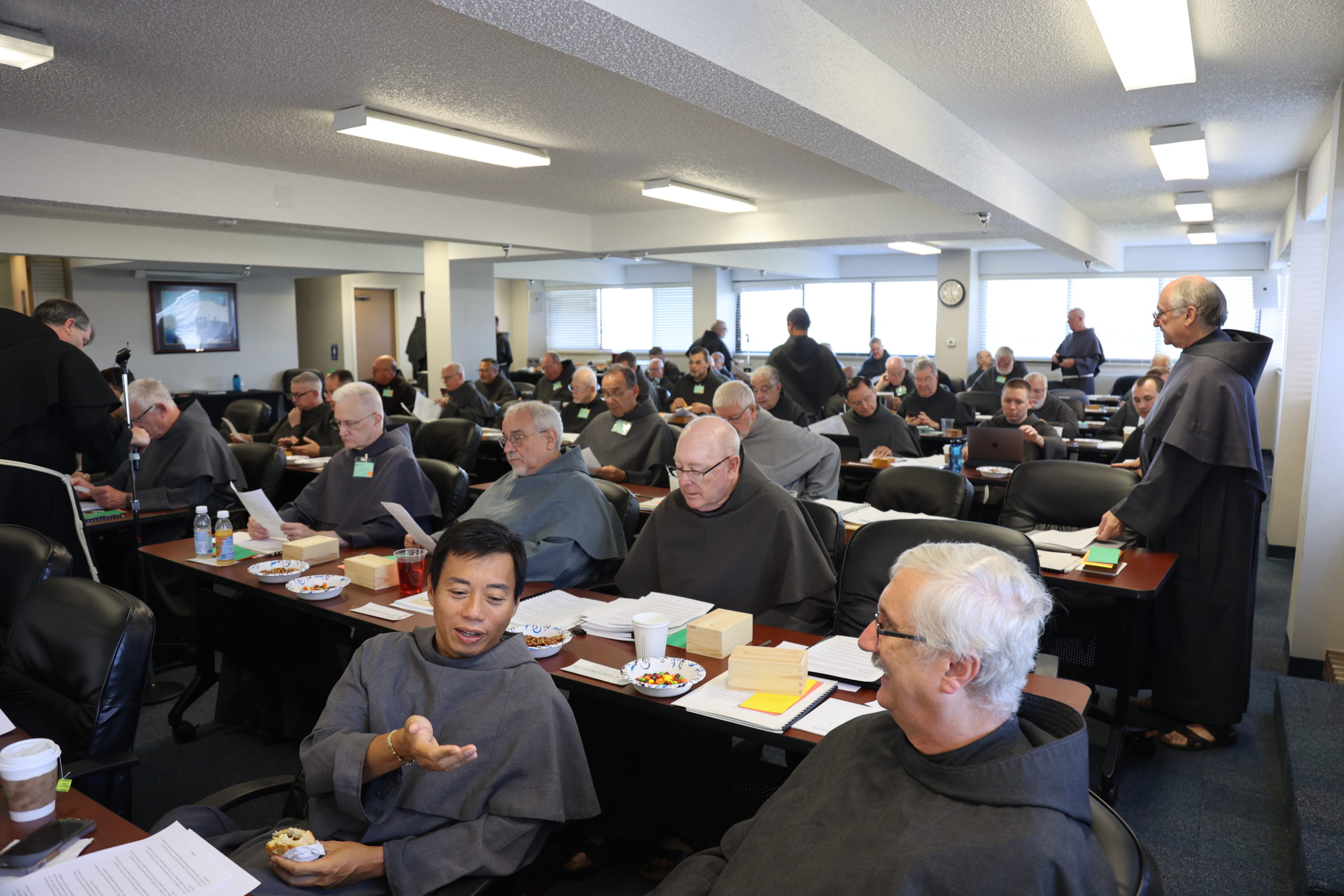 Ordinary Provincial Chapter 2022 – Part II
Link to Friar Jude’s Post – Curia’s WebsiteINVESTITURE:
On Tuesday, July 12, 2022, the friars gathered during the 8:00 a.m. Morning Prayer, led by Friar Michael and joined virtually by the other friars of our province, celebrated the Investiture of our province’s two new Novices: friar Marvin Paul Fernandez, OFM Conv. (above at center of Province’s our Delegation of St. Francis of Assisi, Canada) and friar Connor J. Ouly, OFM Conv. (above at right)
Although the rest of the days and evenings were filled with a tight agenda of meetings, proposals, presentations, assignments, and discussions, the week was one of great fraternal joy.
[Photo Credit: Fr. Tom Lavin, OFM Conv.] 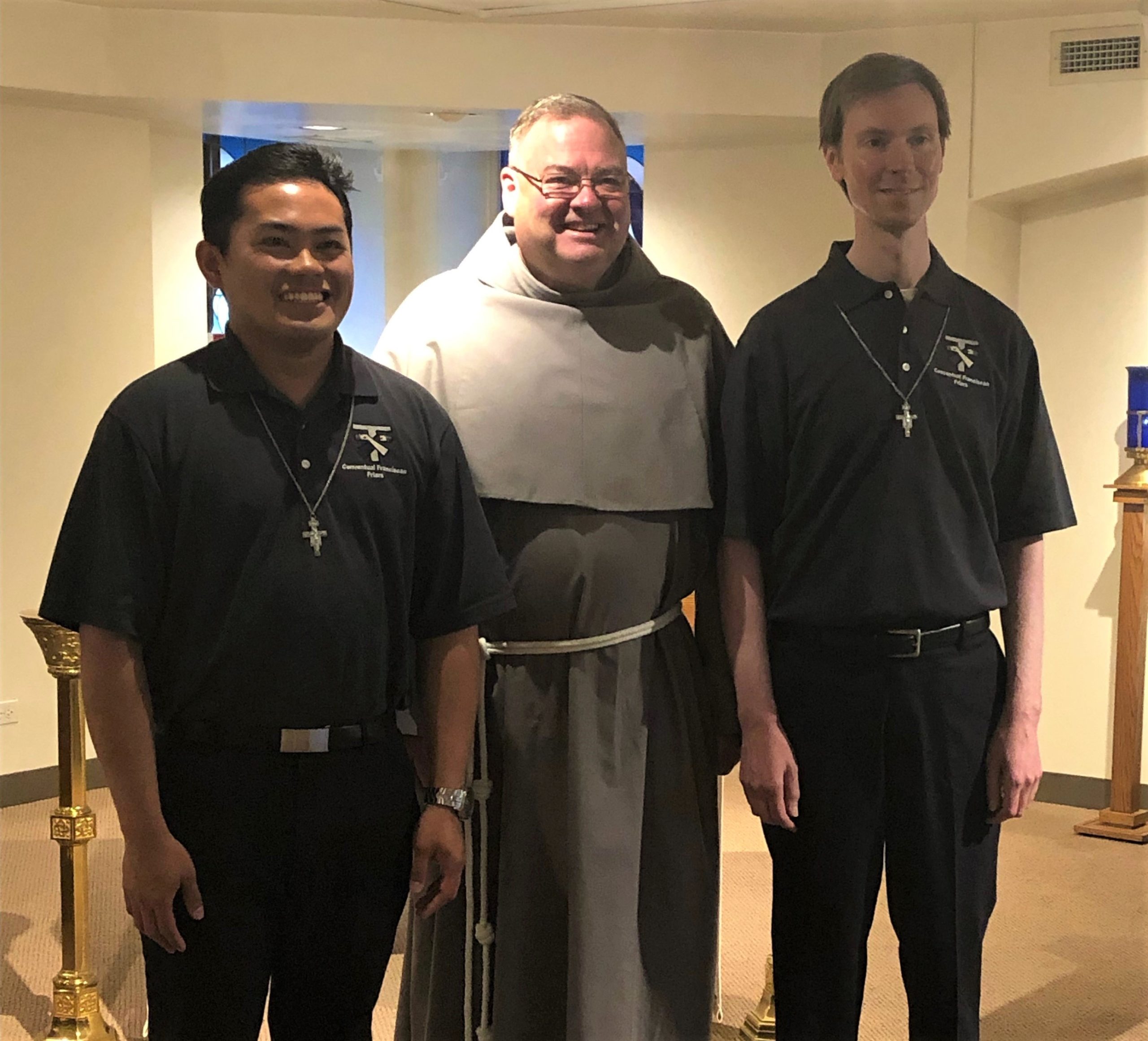 Welcome New Postulants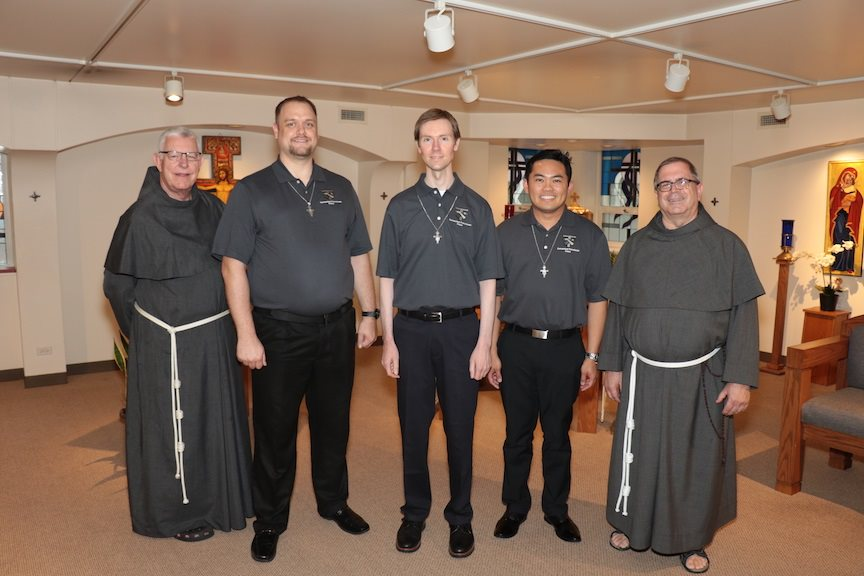 Postulancy Group Photo – Left to Right: Fr. Joseph Bayne, OFM Conv. (Assistant Postulancy Director – friar of Our Lady of the Angels Province), James (St. Bonaventure Province), Adam and Cesar (Our Lady of the Angels Province), and Fr. Paul Schneider, OFM Conv. (Postulancy Directory – friar of the St. Bonaventure Province)
Post by Friar Jude on the Curia’s WebsitePhoto Cred: The top photo can be found on the Postulancy’s Facebook page; a great resource for prayerfully following along with this stage of the postulants’ formation, including their events and prayer life. The photo of Fr. Michael with the postulants of our province was taken by our own Post-Novitiate student friar Edgar Varela, OFM Conv., who is on summer assignment, residing in Chicago’s St. Bonaventure Friary. Please continue to pray for all of the friars in formation, adding to your prayers these new postulants – and their formators, as they journey together through this initial stage of formation, discerning life as friars of our Order of Franciscan Minor Conventual. For more information life as a Franciscan Friar Conventual or on Vocations, including links to the four provinces in North America, as well as to the friars in Malta and the Orient & Holy Land, visit FranciscanVoice.org. 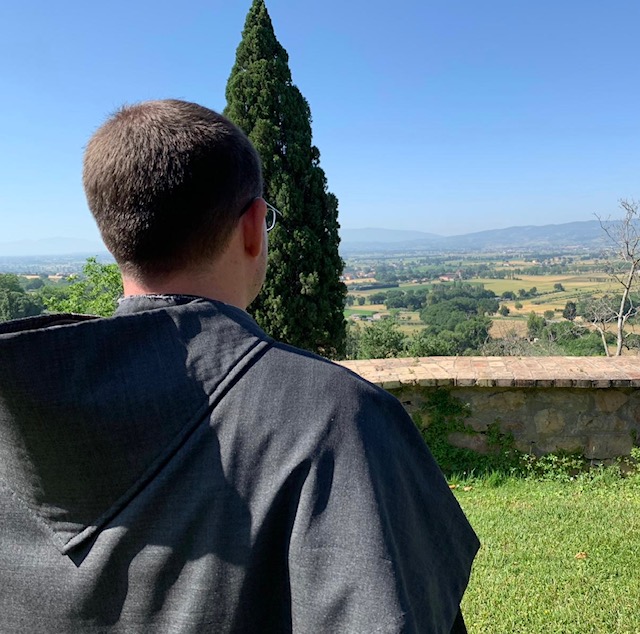 Summer with our Student Friars Friar Rich looking out over the Spoleto Valley from the walls of San Damiano Monastery (Umbria, Italy). Friar Richard Rome, OFM Conv. is a Solemnly Professed Friar, in formation for the priesthood. He began his 2022 Summer Assignments as one of 60 delegate friars at the May 23-27, 2022 Ordinary Provincial Chapter. Phase II of the Chapter will be celebrated July 11-15, 2022.
Friar Rich also shared: “Following the first session of chapter, I participated in the JPIC CFF Pilgrimage to Italy. I was there with Our Lady of the Angels Province Friars Tim Blanchard and Franck Sokpolie, as well as friars from the Our Lady of Consolation Province and the St. Bonaventure Province. While we saw the major pilgrimage sites in Assisi, Padua, and Rome, we were also able to experience the outreach ministries of many of our brothers (and Franciscan sisters) in Italy, to the poor, the immigrant, the marginalized, and those struggling with addiction. It was an awesome experience to see the places that were foundational for our Order, but also to see how our Order is still serving the Church there.” [Photo at left: Friar Rich is pictured in the top row, 2nd from left, with the JPIC CFF pilgrims, outside of the walled-up Holy Door of Papal Basilica of Saint Peter in the Vatican] Friar Rich will again serve as a delegate friar for the second session of the Ordinary Provincial Chapter before heading to our Port St. Lucie pastoral ministry ~ St. Lucie Catholic Church, for a few weeks of a parish assignment, until he returns to the Post-Novitiate Friary (St. Bonaventure Friary, Silver Spring, MD) for the fall semester, at The Catholic University of America, in Washington, DC.  Franciscan Friars Conventual “Grey” HabitQuestions are often presented about the varying colors of
Learn more about our Order & the Provinces serving in North America: Franciscan Voice
|